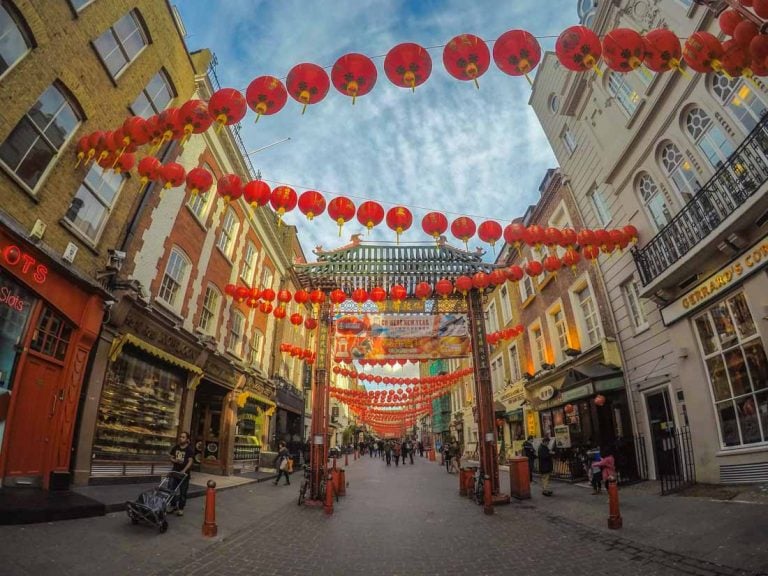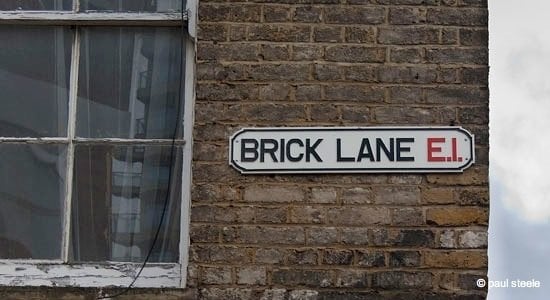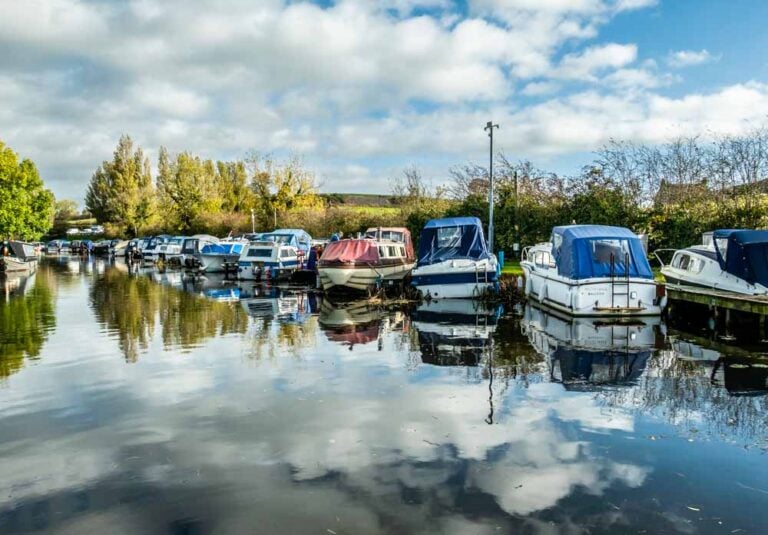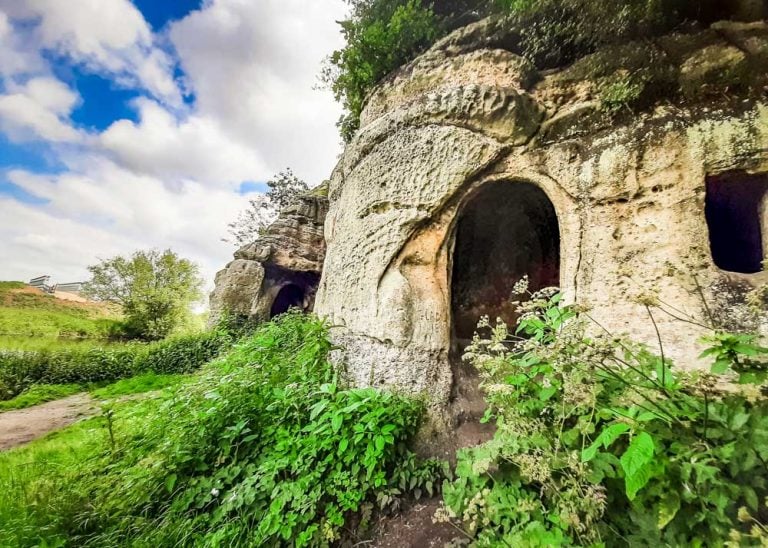What does a visit to Poole’s Cavern have to offer, you may wonder? The cavern tours are fascinating, and the tour guide gives detailed background information on the early history of the cavern system. The guide tells the different scenarios on how human remains came to rest inside the caves and of the famous visitors, which included Florence Nightingale and, supposedly, Mary Queen of Scots.
The stalactites and stalagmites are some of the best examples I have personally seen; it is a spectacular sight. Buxton country park also offers beautiful walks through Grinlow Woods and up to the viewpoint of Solomon’s Temple.
If you want an extra level of fun and exploration, still based within the parkland there is also one of Go Ape’s highest adventure courses, including high wire zip lines and high-level walkways through the woods.
The visitor centre itself offers a remarkably interesting selection of exhibits from fossils, items found inside the cavern and archaeological finds along with background of how and when they were discovered.
The large café at Poole’s Cavern has a wide choice of hot and cold food selections and has great reviews. I found it very tempting, and I will try the café on my next visit.
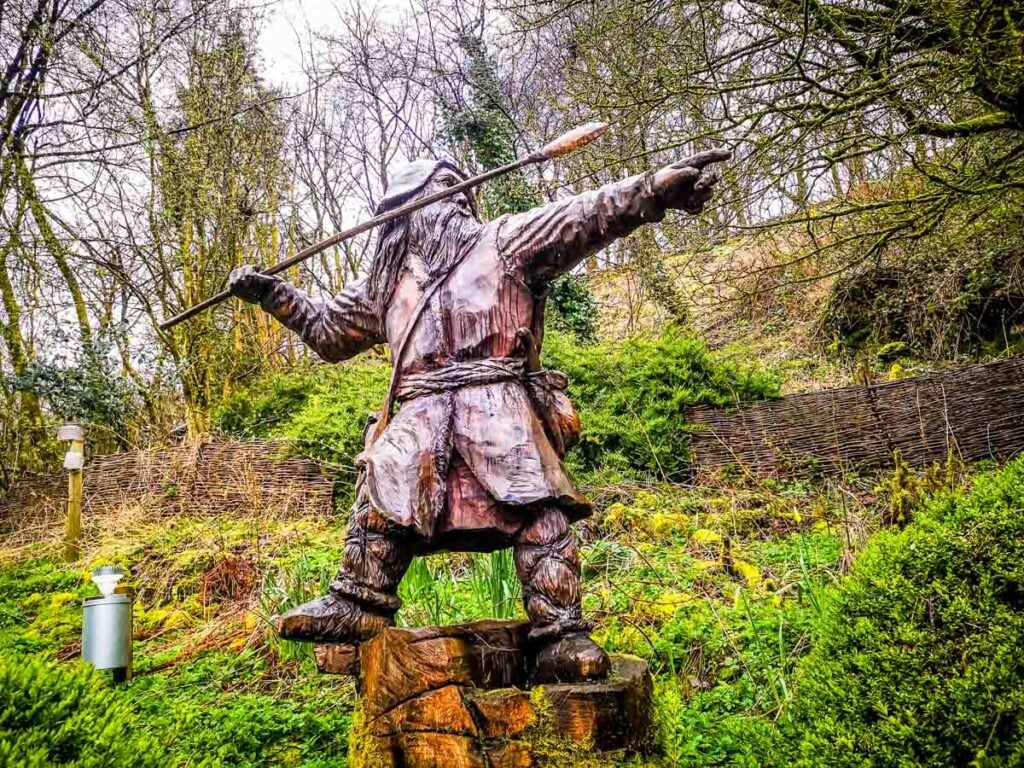
The cavern tours
I advise you to book your tour in advance, but places are still available on the day. The guide starts the 45-minute tour from the visitor centre and takes the group through the rear of the building and into the first area to gather everybody around to explain how the main entrance of the cavern would have been accessed previously, even in Victorian times, by crawling on hands and knees through a small entrance hole.
The entrance is now a head height entry, there is no longer a need to crawl in, thank goodness. The cavern is, however, still not wheelchair accessible, and the ground underfoot is very uneven in places. The light is low, so it could be problem for sight impaired visitors, but, then again, that is a part of the experience of being inside a cave.
As soon as the group enters inside the first section, the history of humans using the caves as a dwelling to shelter from harsh weather and finding a safe place to live is explained. The evidence collected by archaeologists here are also proof of early use of these caves. There is a history of people using this place not only as shelter, but also as a hideaway as a wanted criminal.
Further into the cave the stunning stalactites and stalagmites start to come into view. Not only is it fascinating to learn how stalactites grow, but you will gain a real appreciate for the age of these giant structures.
The tour guide will talk you through all the different formations, all named for the way they look, and the history surrounding each area. In fact, the guide helps make the experience more enriching and fun all the way round. They pause for questions throughout the tour which is nice, as well.
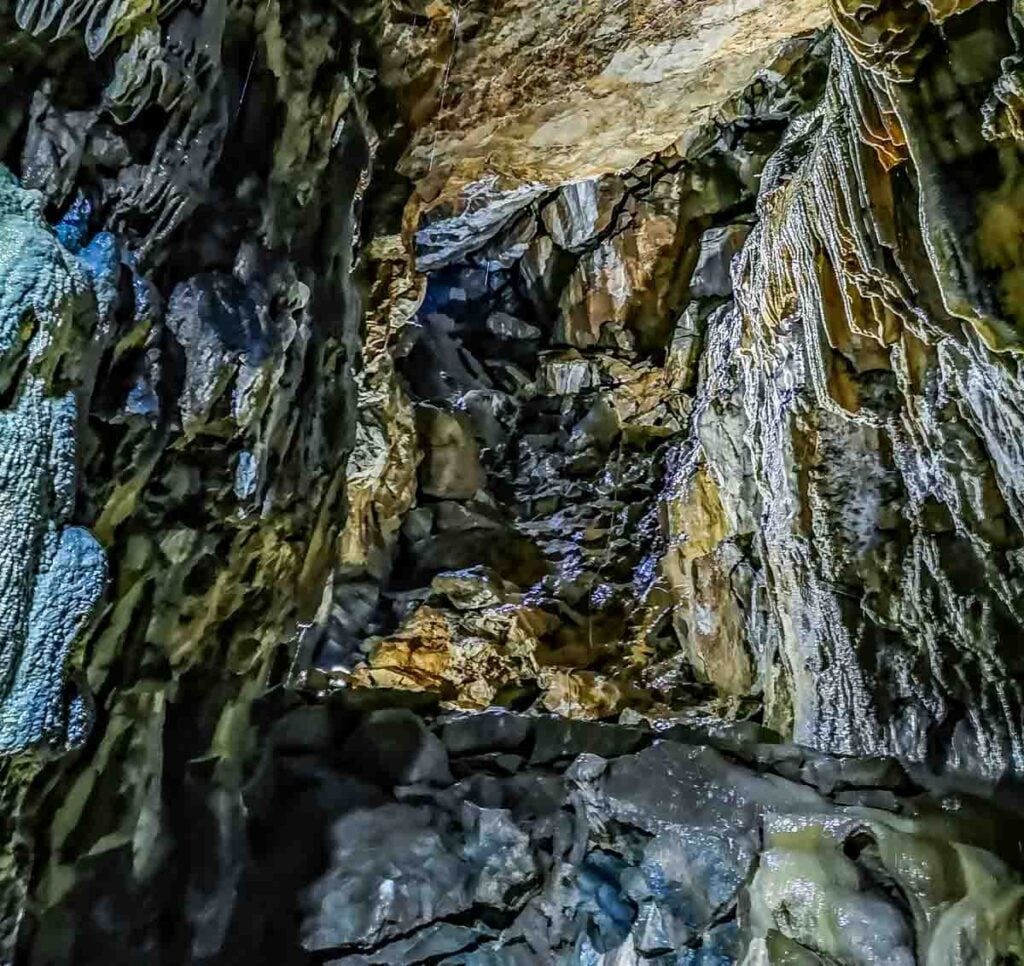
A little history of the cavern
The cavern was owned by the Duke of Devonshire, and in 1853 he realised the potential financial gain it could be worth. He decided to open it as a show cave and named a custodian to it, blasting the opening so that it was more accessible and adding large candelabras fitted for lighting.
The candles were then replaced with gas lights, though the caves were closed in 1965. It wasn’t until until 1976 when they were reopened by the Buxton Civic Society.
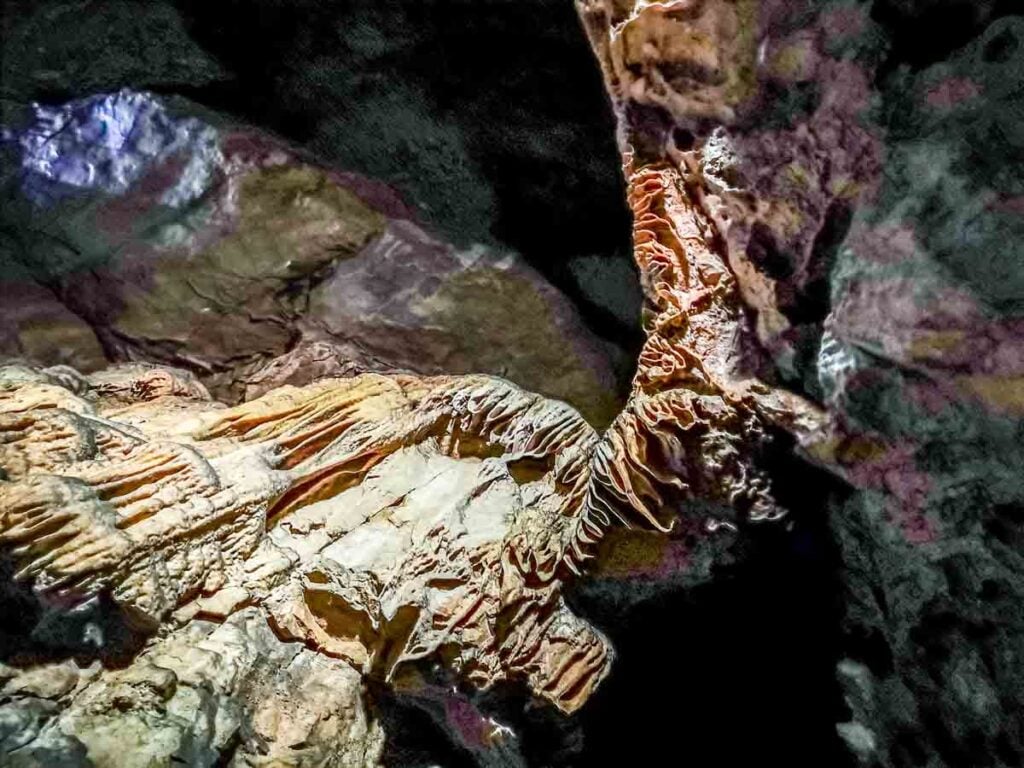
Stalactites and stalagmites
Limestone stalactites generally grow extremely slowly through the steady drip of water seeping through the limestone cave walls. The water contains dissolved calcium bicarbonate from the limestone rock and, as it gets exposed to the air inside the cave, some of the calcium bicarbonate returns back to limestone in tiny increments forming a little ring. This continues and develops at a rate of 10cm or less per thousand years.
Stalagmites however grow upwards in a cone shape from the cave floor using the same method as stalactites from the slow dripping water seeping through the cave roof. The mineralised water drips down and hits the floor, and as it reaches the air it steadily turns solid and builds up to form a stalagmite.
Do you know how to remember the difference between a stalactite and a stalagmite? One way to remember is that a stalactite hanging from the roof would hang on tight just as it sounds by name, and a stalagmite growing up from the floor is quite mighty in stature.
Unfortunately, once touched, accidental or otherwise, both will cease to grow and will gradually die. You can see the difference in colouration in an instance, easily determining those that been touched and their growth interrupted as they have a darker, duller appearance. For this reason, they must never be touched.
The calcite in these formations make them look beautifully bright when a light is shone upon them. These are just some of the reasons they are so special, and what makes me want to see even more of these amazing subterranean formations. Derbyshire has some fabulous caves to visit.
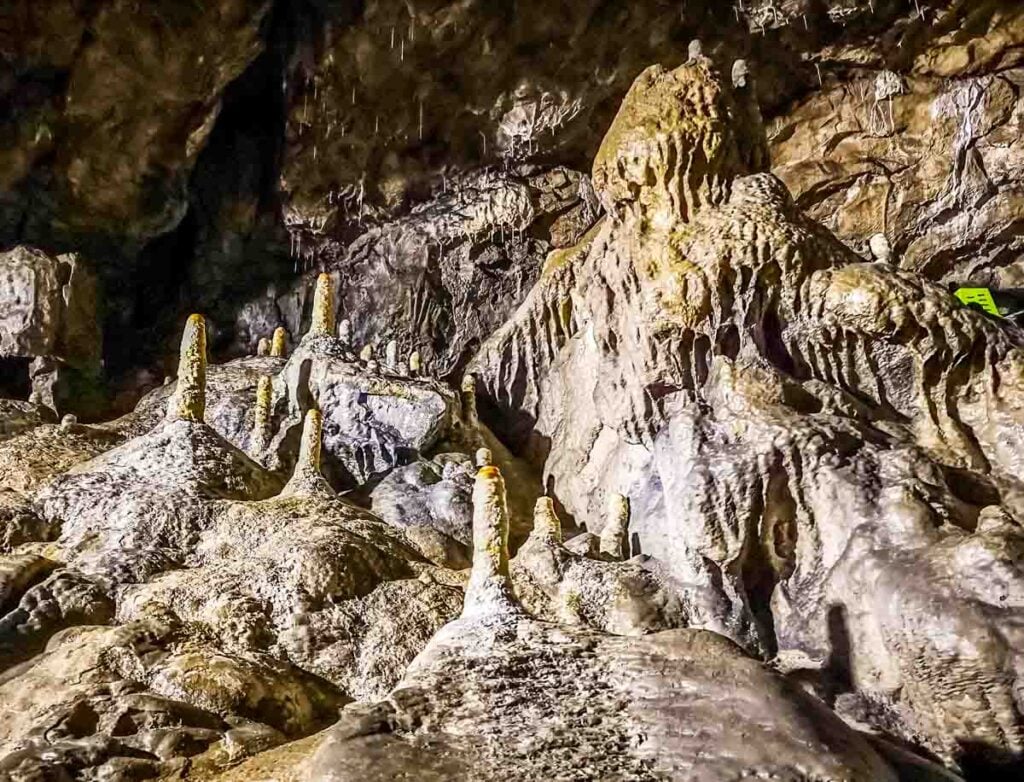
Location and parking
The site at Poole’s cavern has a large car park that is pay and display and has space for 80 cars. Currently the price for parking is £2 for 4 hours parking or £3 for all day parking, which can be especially useful if you are planning a woodland walk after visiting the cavern. The visit makes for a nice full day when combined with walk up through Buxton country park where you can discover the amazing views from the viewpoint at Solomon’s temple.
The address for Poole’s Cavern is Green Lane in Buxton, postcode SK17 9DH
A word of advice when using a sat nav: remember to follow the brown signage once you get close to the location rather than just using the directions on your device.
Public transport links in Buxton include rail links from Manchester, and bus services by High Peak busses that run through many of the Derbyshire towns and villages from Derby all the way through to Buxton.
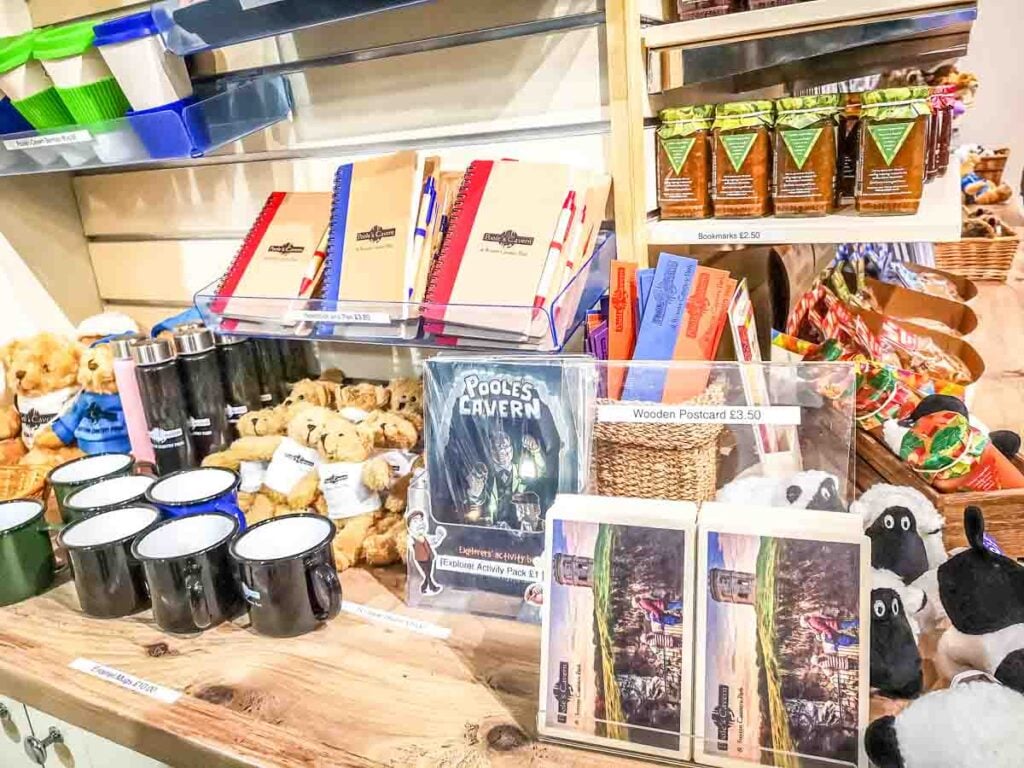
Conclusion
A wonderful experience for the whole family, with plenty to do and experience in the area once you have arrived. The Poole’s cavern tour is highly recommended. It was been a real pleasure visiting and experiencing this attraction. In fact, there was so much to see and take in that I want to return again.
The walk-through Buxton country park is a worthwhile addition to your visit. You could also park here for the walk to Solomon’s temple and experience the tranquillity of the woodland.
The carpark is level with the visitor centre, where you can experience the exhibition area and the gift shop where you can buy rocks and gems, books, postcards, and a wide range of handcrafted goods. Personally, I really enjoyed their selection of natural soaps.
A very tempting café, serving lots of locally produced foods and a seasonal menu, they have gluten free and vegetarian options as well as homemade cakes and soups. On my next visit I will be trying the menu firsthand and ordering a coffee, which is fair trade.
There is also a conference and learning room that caters to groups of up to 30.
A wonderful experience had, with so much more to do on my next visit. I am looking forward to returning. I hope I have inspired you to explore everything on offer at Poole’s Cavern and the surrounding area.



